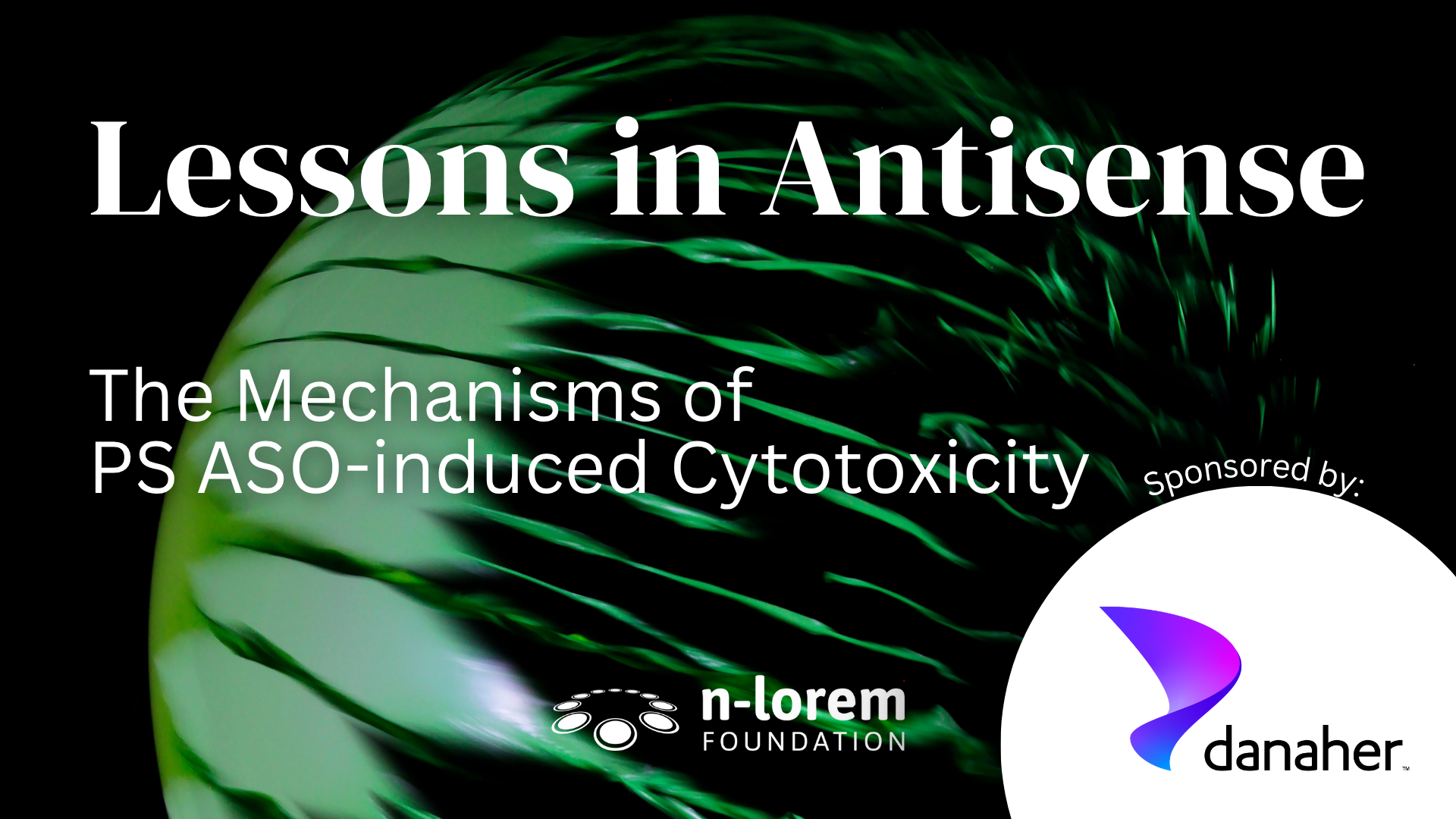Lessons in Antisense
Lesson 15 – The Mechanisms of PS ASO-induced Cytotoxicity
July 28, 2025 by Dr. Stan Crooke

Introduction
The mechanism by which some phosphorothioate (PS) ASOs cause cytotoxicity proved to be the most controversial topic in antisense during the first three decades of the development of the technology. The primary observations that required an explanation were:
- The vast majority of PS 2’-MOE ASOs tested resulted in no cytotoxicity, but about 10% were cytotoxic — and some, very cytotoxic.
- More potent 2’-modifications like PS cEts, LNAs, and fluoros resulted in a higher percentage (as much as 50%) of cytotoxic ASOs, and many of the PS ASOs with such 2’-modifications were severely cytotoxic.
These observations showed that PS content and the sequence of PS ASOs, as well as the nature of 2’-modifications, play a role. In response, two hypotheses were proposed: hybridization-dependent, H1 mediated off-target cleavage and some unknown interaction with proteins were causal. Obviously, there was much to like about the off-target hypothesis. It was specific, and cytotoxicity worsened as 2’-modifications increased RNA binding, and we observed that long RNAs were frequently degraded and the number and extent of long RNAs affected increased with the higher affinity PS ASOs. In contrast, the notion that some unidentified protein interactions could account for all the observations was so nebulous as to be useless.
We therefore vigorously pursued the off-target hypothesis, established protocols to minimize off-target effects, and made sure that regulatory agencies were aware of the potential risks. However, the more we did, the more data we generated that was inconsistent with the hypothesis and several publications noted that apoptosis causes rapid global loss of RNAs, especially long RNAs.
To definitively test the hypothesis, Walt Lima in my group constructed both a constitutive and inducible H1 liver knock out mice that were viable. To my great surprise, the knock-out mice showed a dramatic reduction of cytotoxicity for all ASOs tested. Though this seemed definitive, we also were learning that H1 had a very sizeable interactome, and there were still inexplicable observations.
The mechanisms of PS ASO-induced cytotoxicity
Wen Shen in my lab then showed that cytotoxic PS ASOs of all 2’ classes bound more avidly to H1, and Lingdi Zhang showed that cytotoxic PS ASOs cause more disruption of H1 structure. Wen then showed that cytotoxic PS ASOs of all 2’ classes caused the formation of a PS ASO/H1/paraspeckle protein and RNA complex that migrated to the nucleolus, disrupted pre-rRNA transcription and processing leading to nucleolar distress and apoptosis. We showed that this mechanism accounted for 97% of all cytotoxic PS ASOs in all cell types, mouse organs studied and NHP liver (We studied >500 PS ASOs of different sequences and 2’ chemistries).
Wen next showed that substitution of a single 2’-methoxy at position two in the gap ablated or dramatically reduced cytotoxicity with only modest reduction in potency and thus a sizeable increase in the therapeutic index. We then did thorough structure–activity relationship (SAR) work and ultimately showed that a mesyl-phosphonate at position 2 or 3 in the gap ablated cytotoxicity while increasing potency a bit and sometimes increasing the duration of effect.
What about outliers?
The mechanism, or a variation of it, accounted for cytotoxicity in all the organs we studied, but only time and many more PS ASOs of various sequences and 2’-modifications that are thoroughly studied will fully answer that question.
Is cytotoxicity the only mechanism that can result in adverse events?
No, we know that PS ASOs can induce innate immune activation by binding to TLR9, and innate immune activation can result in activation of the complement cascade. In non-human primates (NHPs), at high doses we can directly activate complement by binding to factor H. NHP factor H binds to PS ASOs more avidly than human factor H. Activation of complement can lead to platelet aggregation and other manifestations.
In the CNS, since ASOs can chelate divalent cations, acute effects thought to be due to disruption of nerve function can be seen in rats dosed intrathecally, and at high intrathecal doses in humans, we have observed peripheral neuropathies thought to be related to disruption of nerve traffic in ganglia. Moreover, PS ASOs can activate innate immunity in the CNS, and that can be seen as glial cell activation.
Conclusions
PS ASOs are complex chemicals with pleiotropic effects, and animals and humans are complex biological systems that may react to PS ASOs in a variety of ways that can result in adverse events. Nevertheless, as we better understand each mechanism by which PS ASOs may result in adverse events, we can design more effective and safer PS ASOs.

We cannot do
this alone
Together we are changing the world—
one patient at a time
We hope that you join us on this journey to discover, develop and provide individualized antisense medicines for free for life for nano-rare patients. The ultimate personalized medicine approach – for free, for life.
Follow us on social for updates on our latest efforts


